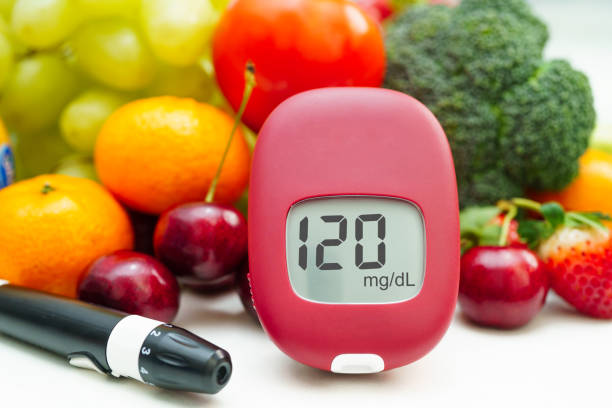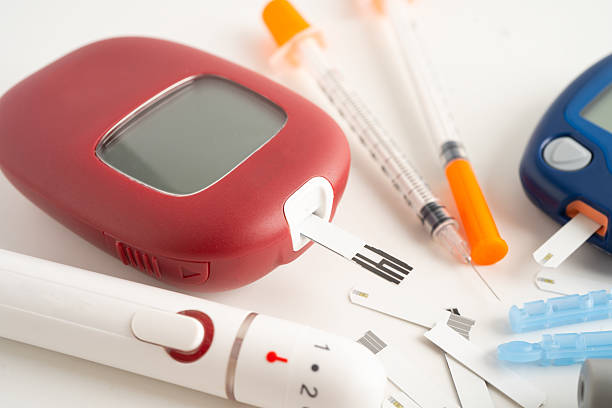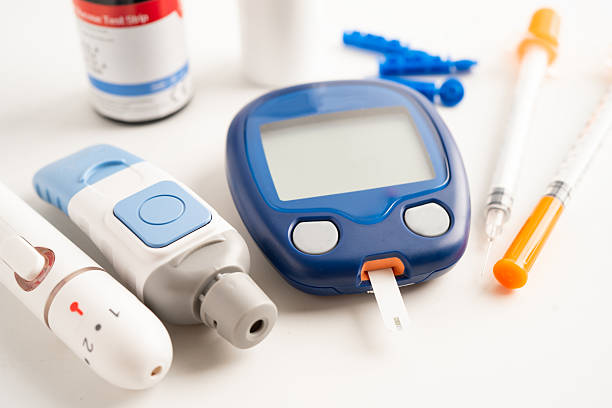Keeping your blood sugar balanced is key to better health. Whether you’re living with diabetes, working to lose weight, or simply want to feel more energized, steady blood sugar levels can make a big difference. When your blood sugar stays in a healthy range, you may notice fewer energy crashes, better focus, and improved overall well-being.
In this guide, you’ll discover simple ways to keep your blood sugar steady. We’ll explore smart food choices, healthy habits, and easy daily tips that can help you feel better and stay on track. These natural methods can support your energy, focus, and long-term health.
Why Blood Sugar Matters
Your blood sugar (also called blood glucose) is your body’s main source of energy. But when blood sugar levels get too high or too low, it can lead to problems such as:
- Fatigue
- Mood swings
- Weight gain
- Brain fog
- Diabetes
Keeping your blood sugar steady can help you feel more energized, think clearly, and support your health over time. It’s an important part of staying balanced both physically and mentally.

What Causes Blood Sugar Spikes?
Blood sugar spikes happen when sugar from the food you eat enters your bloodstream too fast. This can cause a quick rise in blood sugar levels. Common causes of spikes include:
- Eating sugary foods and drinks
- Skipping meals
- Not getting enough exercise
- High stress
- Poor sleep habits
When blood sugar spikes happen often, your body has a harder time managing them. Over time, this can lead to insulin resistance and increase the risk of type 2 diabetes.
How to Stabilize Blood Sugar Levels: Best Tips
Let’s look at the best natural ways to balance your blood sugar and boost your overall health. With simple daily changes, you can support steady energy, better focus, and long-term wellness—starting today.
1. Choose Complex Carbs Over Simple Carbs
Simple carbs like white bread, candy, soda, and pastries can cause a quick spike in blood sugar. In contrast, complex carbs break down more slowly and help keep you full and energized. Choosing the right carbs can make a big difference in how you feel.
Smart carb choices include:
- Brown rice
- Quinoa
- Oats
- Sweet potatoes
- Lentils
- Beans
Tip: Pairing carbs with a source of protein or healthy fat can help slow sugar absorption and prevent spikes.
Learn more about carbohydrates and blood sugar from the American Diabetes Association.
2. Eat Balanced Meals
Each meal should have a healthy balance of the following:
- Protein (like chicken, fish, tofu, or eggs)
- Healthy fats (such as avocado, olive oil, or nuts)
- Fiber-rich carbs (like vegetables and whole grains)
This mix helps your body digest food more slowly and keeps blood sugar levels steady.
Try building a blood sugar-friendly plate with foods like:
- Grilled salmon
- Steamed broccoli
- Quinoa tossed with olive oil and herbs
Eating this way can help you feel full longer and avoid energy crashes.
3. Don’t Skip Meals
Skipping meals can cause your blood sugar to drop, leading to strong cravings and overeating later. This up-and-down pattern can make it harder to stay balanced.
Instead, try these simple tips:
- Eat every 3 to 5 hours
- Keep healthy snacks nearby (like nuts, cheese, or fruit)
Following a regular eating schedule helps keep your blood sugar stable all day long. It also supports steady energy and better focus.
4. Watch Your Portion Sizes
Eating too much—even healthy foods—can cause your blood sugar to rise. Managing portion sizes is just as important as choosing the right foods.
Try these simple tips to control portions:
- Use smaller plates to help with serving sizes
- Eat slowly and enjoy each bite
- Stop eating when you feel about 80% full
Remember, it’s not only what you eat but also how much you eat that affects your blood sugar.
5. Stay Active Every Day
Exercise helps your body use insulin more effectively and lowers blood sugar levels. You don’t need a gym membership—just moving more throughout your day can make a big difference!
Some great ways to stay active include:
- Brisk walking for 30 minutes each day
- Dancing to your favorite music
- Swimming laps or water aerobics
- Riding a bike outdoors or on a stationary bike
- Practicing yoga for strength and flexibility
Even taking short walks after meals can help keep your blood sugar steady.
The Centers for Disease Control and Prevention (CDC) recommends adults get at least 150 minutes of moderate exercise every week for better health.

6. Stay Hydrated
Drinking water helps your kidneys flush out extra sugar from your body. Staying hydrated is important for keeping blood sugar levels in check.
Aim to drink:
- 8 to 10 cups of water each day
- Even more if you’re active or the weather is hot
Try to avoid sugary drinks like soda and sweet tea, as they can cause rapid blood sugar spikes.
Better choices include:
- Water with a splash of lemon
- Herbal teas without added sugar
- Unsweetened sparkling water
These drinks keep you refreshed without raising your blood sugar.
7. Add More Fiber to Your Diet
Fiber helps slow down digestion and the absorption of sugar into your bloodstream. Eating more fiber can support steady blood sugar levels and improve overall health.
Some high-fiber foods to include in your diet are:
- Leafy greens like spinach and kale
- Fresh berries such as blueberries and raspberries
- Chia seeds
- Beans like black beans and lentils
- Whole grains such as oats and brown rice
Besides helping control blood sugar, fiber also aids digestion and helps you feel full for longer.
8. Manage Stress Levels
When you feel stressed, your body releases hormones like cortisol that can raise your blood sugar levels. Managing stress is important for keeping blood sugar steady and protecting your overall health.
Here are some simple ways to reduce stress:
- Practice deep breathing exercises
- Try meditation or mindfulness
- Write your thoughts in a journal
- Spend time outdoors in nature
- Talk with a trusted friend or family member
Even just a few minutes of calm each day can make a big difference.
9. Get Enough Sleep
Poor sleep can affect how your body uses insulin and may cause your blood sugar to rise. Getting good rest is key to keeping blood sugar balanced and supporting overall health.
To improve your sleep:
- Aim for 7 to 9 hours of sleep every night
- Keep a consistent bedtime and wake-up routine
- Avoid screens like phones and TVs before going to bed
- Make your bedroom cool, quiet, and dark for better rest
Better sleep helps your blood sugar stay steady and gives you more energy during the day.
10. Monitor Your Blood Sugar (If Needed)
If you have diabetes or prediabetes, regularly checking your blood sugar can help you see how food, stress, and exercise affect your levels. Monitoring your blood sugar gives you valuable information to manage your health better.
Be sure to talk with your doctor about:
- How often you should check your blood sugar
- What target numbers you should aim for
- How to use a glucose monitor or continuous glucose monitor (CGM) properly
Keeping track of your blood sugar helps you stay in control and make smarter choices every day.
Best Foods to Stabilize Blood Sugar
Here are some of the top foods that naturally help balance your blood sugar:
- Leafy greens: Low in carbs and packed with fiber to support digestion
- Berries: Naturally low in sugar and rich in antioxidants that protect your body
- Eggs: An excellent source of protein to keep you full and energized
- Nuts: Provide healthy fats and fiber that help slow sugar absorption
- Fatty fish: Like salmon, full of omega-3 fatty acids that support heart health
- Chia seeds: Loaded with fiber and good fats to stabilize blood sugar
- Whole grains: Such as oats, quinoa, and barley, which digest slowly
- Greek yogurt: High in protein and probiotics to support gut health
Bonus tip: Sprinkle cinnamon on your meals—it may help improve insulin sensitivity and blood sugar control.

Habits That Help Keep Blood Sugar Stable
Small habits can add up to big health benefits over time. Try to:
- Eat your meals and snacks at regular times each day
- Choose whole, natural foods instead of processed options
- Check food labels carefully for hidden sugars and additives
- Move your body daily with activities you enjoy
- Practice mindfulness or meditation to reduce stress
- Keep a food journal to track what you eat and how it affects you
These simple steps help build a healthier lifestyle and support steady blood sugar levels.
When to See a Doctor
If you have frequent symptoms like:
- Fatigue
- Blurred vision
- Frequent urination
- Extreme thirst
- Unexplained weight changes
It’s time to speak with your doctor. You may have prediabetes or diabetes. Early action makes a big difference.
Final Thoughts: You Can Take Control
Stabilizing your blood sugar doesn’t have to be difficult. By making smart food choices, moving your body every day, and adopting simple habits, you can boost your energy, avoid sugar crashes, and reduce your risk of health problems.
Start with small steps. Try adding one new healthy habit each week, like eating more veggies or taking a short walk. Over time, these changes add up, helping you feel more energetic, improve your mood, and keep your blood sugar steady.

